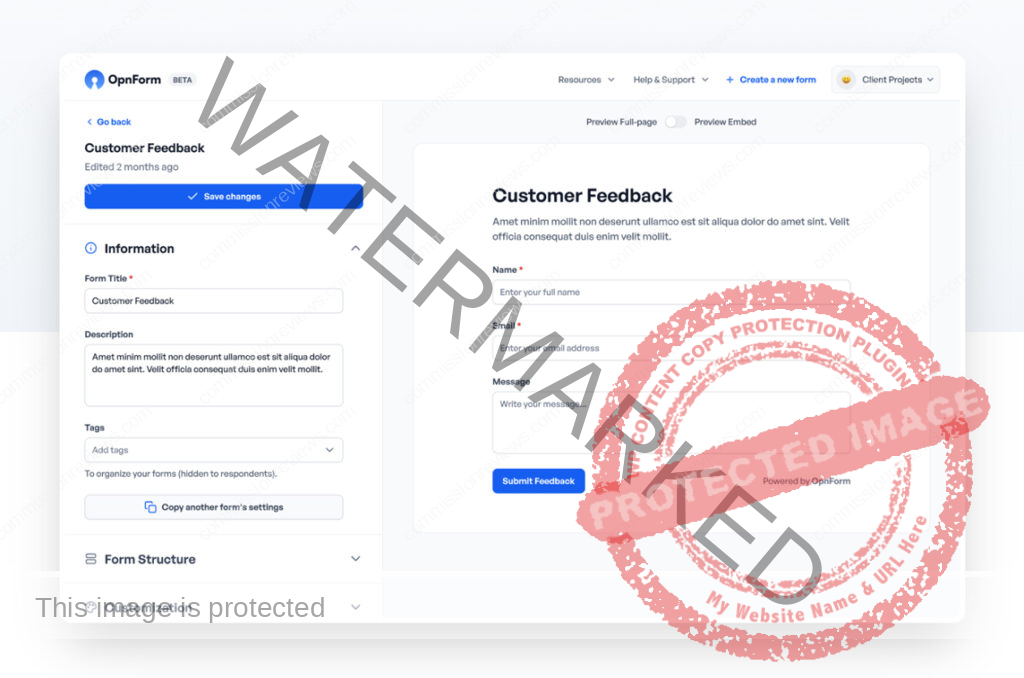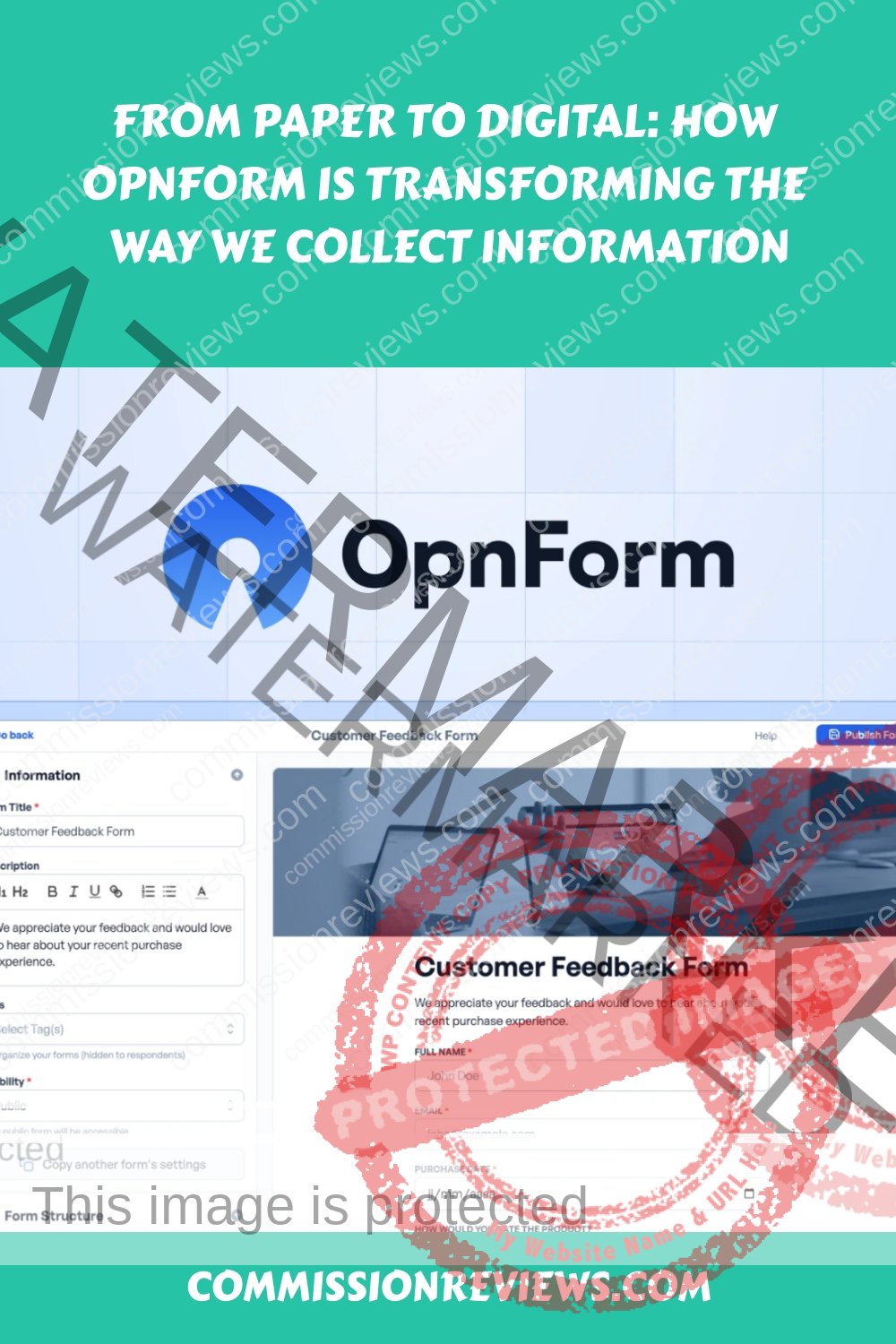In today’s digital age, the way we collect and manage information has undergone a significant transformation. Gone are the days of paper-based forms and manual data entry. With the rise of technology, digital forms have become the new norm for collecting and organizing information. This shift from paper to digital has revolutionized the way businesses, educational institutions, and healthcare providers collect and manage data.
The evolution of information collection can be traced back to the early days of paper-based forms. These forms were time-consuming and labor-intensive, requiring individuals to manually fill out each field and submit them for processing. This process was not only inefficient but also prone to errors and inaccuracies. Additionally, paper-based forms were difficult to organize and store, often leading to lost or misplaced documents.
The Limitations of Paper-Based Forms
One of the main limitations of paper-based forms is the amount of time and effort required to complete them. Individuals had to manually fill out each field, which could be a time-consuming process, especially for large-scale data collection projects. This not only wasted valuable time but also required additional resources to input the data into a computer system.
Furthermore, paper-based forms were prone to errors and inaccuracies. Handwriting could be difficult to read, leading to misinterpretation of data. Additionally, individuals may make mistakes or omit information when filling out the forms, resulting in incomplete or incorrect data. These errors could have serious consequences, especially in industries where accurate data is crucial.
Another limitation of paper-based forms was the difficulty in organizing and storing them. Physical documents took up space and required manual filing systems. Retrieving specific information from a large collection of paper forms could be time-consuming and inefficient. Additionally, there was always a risk of losing or misplacing important documents.
The Advantages of Digital Forms
The advent of digital forms has brought numerous advantages over their paper-based counterparts. One of the main advantages is the speed and efficiency with which data can be collected. Digital forms can be filled out electronically, eliminating the need for manual data entry. This not only saves time but also reduces the risk of errors and inaccuracies.
Digital forms also offer increased accuracy and reliability. With electronic input, there is no room for misinterpretation of handwriting or mistakes in data entry. Additionally, digital forms can include validation rules and error checks to ensure that all required fields are completed correctly. This leads to more accurate and reliable data collection.
Furthermore, digital forms are easier to manage and analyze. Data collected through digital forms can be automatically stored in a database or cloud storage system, making it easily accessible and searchable. This eliminates the need for physical filing systems and reduces the risk of lost or misplaced documents. Additionally, digital forms can be integrated with data analysis tools, allowing for real-time reporting and insights.

Introducing OpnForm: A Revolutionary Platform for Collecting Information
OpnForm is a revolutionary platform that takes digital form collection to the next level. It is designed to streamline the process of collecting, managing, and analyzing data, making it easier and more efficient for businesses, educational institutions, and healthcare providers.
OpnForm offers a user-friendly interface that allows users to create and customize forms according to their specific needs. The platform provides a wide range of form templates and customization options, allowing users to tailor their forms to collect the exact information they require. OpnForm also offers advanced features such as conditional logic, which allows for dynamic form fields based on user responses.
How OpnForm Works: An Overview of the Features and Functionality
OpnForm offers a comprehensive set of features and functionality that make it easy to create, collect, manage, and analyze data. The platform allows users to create and customize forms using a drag-and-drop interface. Users can add various form fields such as text boxes, checkboxes, dropdown menus, and file upload fields. OpnForm also offers advanced features such as conditional logic, which allows for dynamic form fields based on user responses.
Once the forms are created, users can easily distribute them to respondents via email, social media, or embedded links. Respondents can fill out the forms electronically, either on their computers or mobile devices. OpnForm also offers offline data collection capabilities, allowing users to collect data even without an internet connection.
OpnForm provides a centralized dashboard where users can manage and organize their form submissions. The platform automatically stores the data in a secure database or cloud storage system, making it easily accessible and searchable. Users can also set up automated workflows and notifications to streamline the data collection process.

The Benefits of Using OpnForm for Data Collection
Using OpnForm for data collection offers numerous benefits for businesses, educational institutions, and healthcare providers. One of the main benefits is increased efficiency and productivity. OpnForm eliminates the need for manual data entry and reduces the time and effort required to collect and process information. This allows organizations to focus on more important tasks and improve overall productivity.
OpnForm also improves accuracy and reliability in data collection. With electronic input and validation rules, there is less room for errors and inaccuracies. This leads to more accurate and reliable data, which is crucial for making informed decisions and driving business growth.
Furthermore, OpnForm enhances data analysis and reporting capabilities. The platform integrates with data analysis tools, allowing users to generate real-time reports and insights from the collected data. This enables organizations to make data-driven decisions and identify trends or patterns that can drive business success.
Case Study: OpnForm in Action
To illustrate the effectiveness of OpnForm in real-world scenarios, let’s look at a few case studies:
1. Case Study 1: A retail company was looking to streamline their customer feedback process. They implemented OpnForm to collect feedback from customers after their purchases. With OpnForm, the company was able to create customized feedback forms and distribute them via email. The platform automatically stored the feedback in a centralized database, allowing the company to analyze the data and make improvements based on customer insights.
2. Case Study 2: A university wanted to improve their course evaluation process. They used OpnForm to create online evaluation forms that students could fill out at the end of each semester. OpnForm allowed the university to collect and analyze feedback from students in a more efficient and organized manner. The university was able to identify areas for improvement and make changes to enhance the learning experience for students.
3. Case Study 3: A healthcare provider wanted to streamline their patient intake process. They implemented OpnForm to collect patient information electronically before appointments. OpnForm allowed the provider to create customized intake forms and send them to patients via email. The platform automatically stored the patient information in a secure database, making it easily accessible for healthcare professionals. This streamlined the intake process and improved patient care outcomes.
OpnForm for Business: Streamlining Workflows and Increasing Productivity
OpnForm offers numerous use cases for businesses across various industries. Here are a few examples of how OpnForm can improve workflows and increase productivity:
1. Customer Surveys: Businesses can use OpnForm to collect customer feedback and insights through online surveys. This allows organizations to gather valuable information about customer satisfaction, preferences, and needs, which can drive business growth.
2. Employee Onboarding: OpnForm can streamline the employee onboarding process by allowing new hires to fill out necessary forms electronically before their start date. This eliminates the need for manual paperwork and reduces administrative tasks for HR departments.
3. Event Registrations: OpnForm can simplify event registrations by allowing attendees to register online and provide necessary information. This eliminates the need for paper registration forms and manual data entry, making the process more efficient and accurate.

OpnForm for Education: Enhancing Learning and Assessment Processes
OpnForm offers numerous use cases for educational institutions, from K-12 schools to universities. Here are a few examples of how OpnForm can enhance learning and assessment processes:
1. Course Evaluations: OpnForm allows educational institutions to collect feedback from students about their courses and instructors. This feedback can be used to improve teaching methods, curriculum design, and overall student satisfaction.
2. Surveys and Assessments: OpnForm can be used to create online surveys and assessments for students. This allows educators to gather feedback, assess student understanding, and track progress more efficiently.
3. Parent-Teacher Conferences: OpnForm can simplify the scheduling process for parent-teacher conferences by allowing parents to sign up for time slots online. This eliminates the need for paper sign-up sheets and reduces administrative tasks for school staff.
OpnForm for Healthcare: Improving Patient Care and Outcomes
OpnForm offers numerous use cases for healthcare providers, from hospitals to private practices. Here are a few examples of how OpnForm can improve patient care and outcomes:
1. Patient Intake Forms: OpnForm allows healthcare providers to collect patient information electronically before appointments. This streamlines the intake process, reduces administrative tasks, and improves patient satisfaction.
2. Patient Surveys: OpnForm can be used to collect patient feedback and satisfaction surveys. This allows healthcare providers to gather valuable insights about the patient experience and make improvements based on patient feedback.
3. Clinical Research: OpnForm can simplify the data collection process for clinical research studies. Researchers can create customized forms to collect data from study participants, making the process more efficient and accurate.
The Future of Information Collection with OpnForm
OpnForm has the potential to revolutionize the way we collect and manage information across various industries. The benefits of adopting digital forms, such as increased efficiency, improved accuracy, and enhanced data analysis, are undeniable. With OpnForm, businesses, educational institutions, and healthcare providers can streamline their workflows, increase productivity, and make data-driven decisions.
As technology continues to advance, the future of OpnForm looks promising. The platform will likely continue to evolve and offer new features and functionality to meet the changing needs of organizations. With its user-friendly interface and powerful capabilities, OpnForm is poised to become the go-to platform for information collection in the digital age.






















